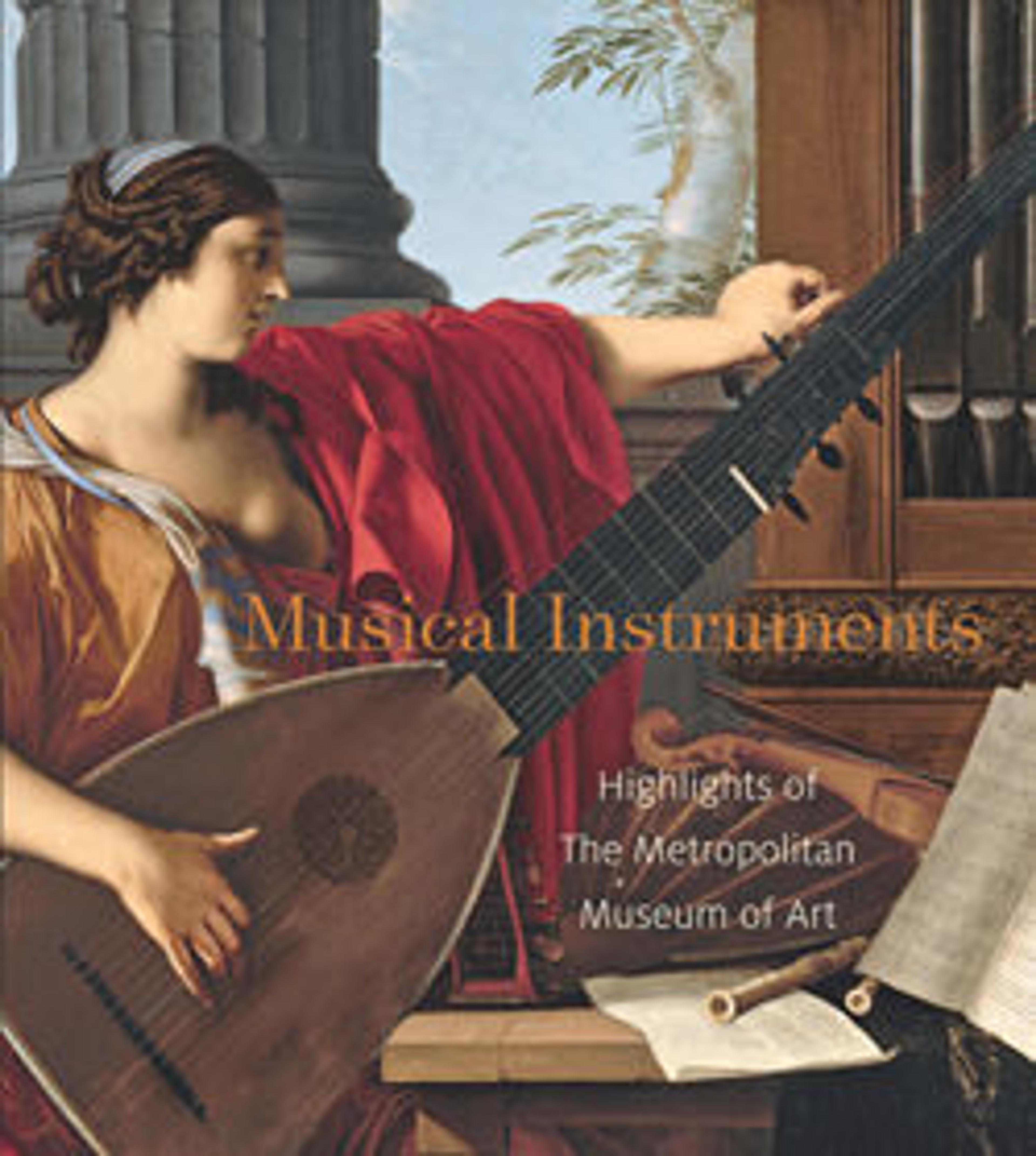Cornetto in A
The cornetto, also known as a zink, is a lip-vibrated instrument made by adding finger holes and a thumbhole to a signal horn. Its small cup-shaped mouthpiece is like that of a trumpet, but it is usually played on the side of the mouth, where the lips are narrower. Cornetti have a narrow bore, with a straight or curved body shape. They were made in several sizes, with the cornetto in A being the principal size.
The cornetto was a difficult instrument to master, but skilled players could excel in virtuosity and compete with the violin. Cornetti were widely used in polyphonic music of the sixteenth and seventeenth centuries (see Odhecaton), to accompany choral singing in churches, to play the soprano part in trombone ensembles, and for both secular and religious music.
This cornetto has an octagonal body, slightly curved, and narrower at the top, where it is carved with a pattern of diamond facets. A gilt and engraved ferrule encircles the top of the body.
The cornetto was a difficult instrument to master, but skilled players could excel in virtuosity and compete with the violin. Cornetti were widely used in polyphonic music of the sixteenth and seventeenth centuries (see Odhecaton), to accompany choral singing in churches, to play the soprano part in trombone ensembles, and for both secular and religious music.
This cornetto has an octagonal body, slightly curved, and narrower at the top, where it is carved with a pattern of diamond facets. A gilt and engraved ferrule encircles the top of the body.
Artwork Details
- Title: Cornetto in A
- Date: ca. 1575
- Geography: Germany
- Culture: German
- Medium: Ivory, gilt ferrule
- Dimensions: 22 1/2 × 1 1/4 × 1 1/4 in. (57.2 × 3.2 × 3.2 cm)
Width (At widest curve, approx.): 2 3/4 in. (7 cm) - Classification: Aerophone-Lip Vibrated
- Credit Line: Funds from various donors, 1952
- Object Number: 52.96.1
- Curatorial Department: Musical Instruments
More Artwork
Research Resources
The Met provides unparalleled resources for research and welcomes an international community of students and scholars. The Met's Open Access API is where creators and researchers can connect to the The Met collection. Open Access data and public domain images are available for unrestricted commercial and noncommercial use without permission or fee.
To request images under copyright and other restrictions, please use this Image Request form.
Feedback
We continue to research and examine historical and cultural context for objects in The Met collection. If you have comments or questions about this object record, please contact us using the form below. The Museum looks forward to receiving your comments.
